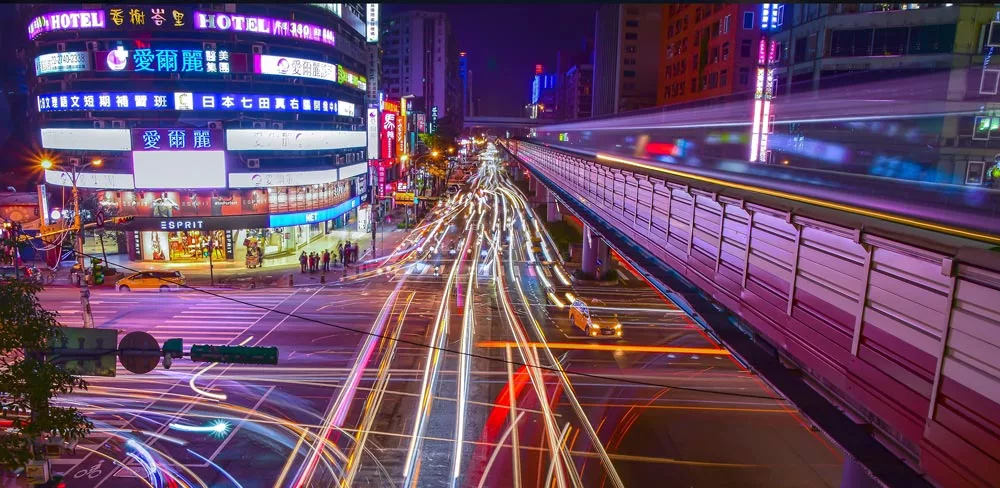Introduction:
Smart cities have gained tremendous popularity in recent years, promising to revolutionize urban living using the power of IoT (Internet of Things) and mobile app technology. Cities may increase efficiency, improve infrastructure, and deliver better services to inhabitants by smoothly integrating multiple systems and devices. In this blog article, we will look at the role of IoT and mobile applications in enabling smart cities and their influence on sustainability and essential advantages.
What are Smart Cities

The integration of technology, data, and urban infrastructure to produce more efficient, sustainable, and livable urban settings is represented by smart cities. With rising urbanization and the issues it entails, smart cities provide creative solutions to improve inhabitants’ quality of life and optimize resource management.
Connectivity is critical in smart cities, with improved communication networks connecting devices, infrastructure, and services. This connection enables real-time monitoring, analysis, and decision-making, allowing smooth data transmission and integration. Smart cities get significant insights into urban trends, resource utilization, and citizen demands by using data from multiple sources such as sensors, IoT devices, and public input. This data-driven approach enables local officials to make educated decisions and implement effective policies.
The ultimate purpose of smart cities is to improve citizens’ overall quality of life. Smart cities aim to create safer, more accessible, and sustainable urban environments that cater to the needs and aspirations of their citizens by improving public services such as efficient transport systems, smart parking solutions, intelligent street lighting, and enhanced safety measures. Smart cities pave the path for a more connected, efficient, and inclusive future by adopting technology and data-driven methods.
IoT in Smart Cities

The Internet of Things (IoT) is a fundamental driver of cities’ development into smart cities. IoT technologies allow for the seamless integration of devices, sensors, and infrastructure, resulting in a networked ecosystem that has the potential to revolutionize urban living.
One of the most important capabilities of IoT in smart cities is the capacity to gather and analyze massive volumes of real-time data. IoT devices and sensors throughout the city monitor numerous variables such as air quality, traffic patterns, trash management, energy usage, and more. This information gives vital insights into the city’s operations, enabling proactive decision-making and effective resource allocation.
IoT improves connectivity in smart cities by allowing devices to talk with one another and share information. This connectivity is the foundation for various apps and services that will enhance inhabitants’ quality of life. Smart transportation systems, for example, use IoT to optimize traffic flow, eliminate congestion, and improve public transit networks. Smart energy grids allow for more effective energy distribution and consumption, which reduces waste and promotes sustainability.
IoT is also important in improving smart cities’ public safety and emergency response. Connected surveillance cameras, smart sensors, and real-time data processing make it possible to identify potential security concerns and respond quickly to emergencies. This contributes to safer surroundings for both inhabitants and tourists.
The Power of IoT to drive efficiency, sustainability, and citizen-centric services is the strength of IoT in smart cities. IoT opens the path for smarter, more livable cities by exploiting the massive network of interconnected devices and harnessing the potential of real-time data.
How IoT and Mobile Applications helps in Enabling Smart Cities:
Data Collection : Internet of Things (IoT) devices, sensors, and wearables installed across the city capture real-time data on a variety of characteristics, like air quality, traffic flow, trash management, energy usage, and more. This data is used to understand how the city works, to detect patterns, and to make data-driven choices.
Connectivity : When IoT devices are combined with mobile apps, they form a network of interconnected devices and infrastructure. This connection enables effective monitoring, management, and coordination of various parts of the city through smooth data interchange and communication between devices.
Real-time Monitoring and Control : Internet of Things devices monitor and control many urban processes. Mobile applications are the user interface for accessing and interacting with these devices. Residents, for example, may remotely manage and alter their household appliances, adjust temperature settings, or monitor energy usage through their mobile apps.
Public Engagement : By offering venues for communication, feedback, and involvement, mobile applications encourage public engagement. Citizens can use mobile applications to report problems, give input on services, take surveys, and participate in decision-making processes. This involvement generates a sense of ownership, community participation, and municipal co-creation.
Improved Services :Mobile applications provide easy access to a variety of city services such as transportation, utilities, public safety, healthcare, and others. Users may get real-time information, book reservations, pay bills, and get personalized suggestions. This increases the efficiency and convenience of accessing and using city services.
Sustainability and Resource Optimization : Sustainability and resource optimization are made possible via IoT and mobile apps. Cities may optimize resource allocation, decrease waste, and promote sustainability by collecting data on energy use, trash management, water usage, and other topics. Residents may use mobile applications to monitor and regulate their resource consumption, establishing a culture of sustainability.
Smart Mobility : IoT devices linked to mobile applications improve mobility in smart cities. Mobile applications provide residents with real-time traffic information and intelligent parking systems and optimize public transit timetables. This enhances traffic flow, decreases congestion, and encourages efficient transportation solutions.
Safety and Security : Safety and security are improved in smart cities via IoT-enabled surveillance systems, networked sensors, and mobile applications. Mobile applications may give real-time warnings, emergency notifications, and two-way communication during a crisis. Citizens may use smartphone applications to report events, contact emergency services, and get safety information.
Case Studies: Successful Smart City Implementations:
Barcelona (Spain)
Barcelona has been on the cutting edge of smart city ideas. The city adopted “Smart City Barcelona,” a sophisticated urban management platform incorporating numerous IoT technology and data analytics. The initiative concentrated on energy efficiency, transportation, waste management, and community participation. Barcelona erected smart lighting, placed sensors to optimize trash management, and created mobile apps for users to access city services and submit feedback. The effort saved considerable energy, decreased traffic congestion, and increased public happiness.
Singapore
Singapore is well-known for its effective smart city deployment. The city-state started the “Smart Nation” program to improve livability and sustainability by leveraging technology and data. Singapore deployed several smart solutions, such as intelligent transportation systems and efficient energy management. For example, the city adopted a complete smart traffic management system, which helped to reduce congestion and improve traffic flow. Singapore also employs a single smartphone app, “OneService,” to allow individuals to report concerns, monitor requests, and interact with government services.
Songdo, South Korea:
Songdo is a smart city that was purpose-built in South Korea. The city uses cutting-edge technologies to promote sustainable urban development. It has smart buildings with automated energy management systems, garbage disposal through subterranean pneumatic tubes, and a cutting-edge transit system that uses electric cars and sophisticated traffic control. Songdo’s integrated infrastructure, data analytics, and public participation strategy have resulted in a more efficient and sustainable metropolitan environment.
Amsterdam, Holland:
To improve the quality of life for its citizens, Amsterdam has adopted several smart city projects. The city established a large IoT network called “The Things Network,” which provides low-power, long-range communication for smart gadgets. In Amsterdam, smart parking technologies direct cars to available parking spaces, decreasing congestion and pollution. The city also employs data-driven trash management strategies, such as optimizing collection routes based on real-time fill-level data from sensors installed in garbage bins.
Amsterdam, Holland:
To improve the quality of life for its citizens, Amsterdam has adopted several smart city projects. The city established a large IoT network called “The Things Network,” which provides low-power, long-range communication for smart gadgets. In Amsterdam, smart parking technologies direct cars to available parking spaces, decreasing congestion and pollution. The city also employs data-driven trash management strategies, such as optimizing collection routes based on real-time fill-level data from sensors installed in garbage bins.
Denmark, Copenhagen:
Copenhagen is well-known for its emphasis on sustainability and intelligent mobility. The city launched “Bycyklen,” a bike-sharing program that combines smartphone apps, GPS, and IoT technology. Users may use the app to find and hire bikes and benefit from features such as electric assistance and built-in navigation. Smart transport efforts in Copenhagen have dramatically decreased traffic congestion, improved air quality, and encouraged active and sustainable means of transport.
Conclusion:
The need to create sustainable, efficient, and habitable cities grows as the globe continues to urbanize. Smart cities are being transformed by IoT and mobile app technologies that connect inhabitants, infrastructure, and services. Thanks to the power of IoT-enabled gadgets and the ease of mobile apps, we are experiencing a paradigm shift towards a more connected and sustainable future. We can enable smart cities that improve the well-being and prosperity of their citizens while paving the road for a more sustainable planet by leveraging the promise of these technologies.
Build your next IoT based Mobile Application with CodeStore:
We are one of the leading mobile app development companies in India and work extensively with businesses across various industries to build custom mobile applications to cater to business requirements. We understand the importance of having a robust mobile presence in today’s digital landscape and can create high-quality, user-friendly mobile apps for our clients across the globe.
If you are considering the development of an IoT-based mobile app, we encourage you to reach out to us with any inquiries. You can contact us at sales@codestoresolutions.com or give us a call at +91 95997 20600 or +1 (213) 814-4265. We look forward to assisting you!

